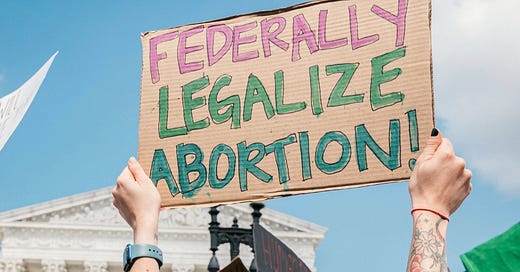Medical schools face quandary over abortion training
Medical students fight for access to abortion training in states where procedure is illegal
Medical students have long had difficulty getting training in abortion methods. The decision by the Supreme Court to overturn Roe v. Wade has only exacerbated that trend.
No mandate exists that requires medical schools to teach aspiring doctors how to perform abortions. Much of the instruction has been offloaded to clinical settings. Some rationalize not training in school settings by saying they would learn it during residency. The problem now is that there aren’t any nearby clinics within 12 states where abortion was made illegal following the Dobbs decision.
Pamela Merritt, executive director for the abortion rights group Medical Students for Choice, spoke to Repro Rights Now, about this. Merritt said that before Dobbs medical schools had merely wanted to avoid abortion because it was so politically charged.
“After Dobbs, it's a combination of that, which is that they are very worried that if they defend the right of their students to get a comprehensive and competitive education, that that would put them right in the crosshairs of incredibly aggressive and retaliatory state politicians who have weaponized the budget process,” Merritt said.
Medical schools are often affiliated with state universities and rely on government funding to operate.
The other issue is the vague wording of antiabortion laws, like the one in Texas, that forbid aiding and abetting abortions.
“There are several states that have similar wording or vague wording on purpose that make it very complicated for medical education institutions to determine what they can do,” Merritt said. “And whenever that is the case, they usually defer to the very conservative definition of what they should do.”
There are some noteworthy complications that have arisen as a result of this. Some medical school administrators fear losing accreditation over the abortion issue. Additionally, because many of these doctors will go to rural areas, there won’t be a physician in those areas with adequate training on how to perform an emergency abortion.
Many of the students are now traveling to California and other abortion sanctuary states to get abortion training. The American College of Obstetricians and Gynecologists recommends that medical students get 20 hours of training on abortions.
Merritt said state legislators can help by passing laws that create funding for abortion education for in-state and out-of-state medical students. She also thinks the federal government could establish a universal standard for abortion education that would mandate that training for schools even where the procedure was illegal.
Merritt said it wouldn’t be long for the public to feel the effects of all this.
“As much as I'm fighting to make sure that doesn't happen, it's a reality that I'm kind of swimming against the current here,” Merritt said. “People need to step up and start demanding accountability, but also demanding a lack of politics in their public health decisionmaking.”




